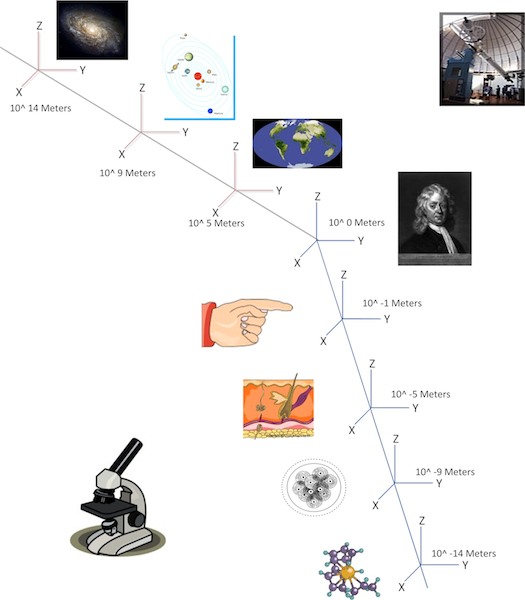Especially in the past 400-500 years, science and technology have made tremendous leaps, changing our way of life and our place in the world around us. Our concept of that world expanded from humans being the center of the world, living on a stationary earth while the nearby stars whorled around us; to a vast expanse of the universe with our earth part of a minor speck of a galaxy and ranging from tiny neutrinos to huge superclusters of galaxies.
While some scientists think we are nearing some Theory of Everything (TOE), history indicates scientists have thought this before and been quite wrong. Nearing 1900, the current theories of physics seemed consistent and already laid out. A reputed quote from Lord Kelvin is: “There is nothing new to be discovered in physics now. All that remains is more and more precise measurement.” One can find similar ideas and quotes today, such as John Horgan’s ‘The End of Science” and a talk regarding this in which he states: “I believe that this map of reality that scientists have constructed, and this narrative of creation, from the big bang through the present, is essentially true. It will thus be as viable 100 or even 1,000 years from now as it is today. I also believe that, given how far science has already come, and given the limits constraining further research, science will be hard-pressed to make any truly profound additions to the knowledge it has already generated. Further research may yield no more great revelations or revolutions but only incremental returns.” (http://www.edge.org/documents/archive/edge16.html)
This blog site is in contrast to this perspective and revolves around two central themes; that Scale is a continuum of reality not properly accounted for in our current theories and that we require a more powerful system of representing (complex) numbers to address the continuum of scale. With one additional theme, the three major ideas to be discussed here:
1) Scale is a true character of space not represented in our current 3-D model. Scale requires a 4th dimension of physical space to account for this characteristic, nudging existing ideas of 4-D space-time to be reconsidered. This does not mean current concepts and equations simply get tossed out. It does mean our existing ones need to be re-interpreted using a 4-D scale model of space.
2) Our current tools for specifying measurements are tied to a specific level of scale; implicitly defined as ‘units of measure’. To handle measurements of objects across scale, our current tool set of numeric representation will need to be expanded. How we represent numbers impacts what we can measure. Without a system like our current decimal numeric system, we cannot adequately represent Real numbers or perform calculations involving Real numbers (eg. the crucial numbers Pi and the natural logarithm ‘e’). However there are many quantities in science requiring Complex values, which cannot be adequately addressed using a numeric system that only manages to cover the Real numbers. We now require a numeric system capable of representing Complex numbers uniquely and completely – as single fully formed values, without the ‘imaginary part’ using the undefined term of sqrt(-1) or ‘i’.
3) If 4 dimensions are needed to account for scale in physical space, what happens to 4-D space-time? Time needs a proper scientific definition and application to equations. If ‘time’ is to be represented as a physical dimension, what characteristics of space does time include (if any)? If ‘time’ is already included in ‘space-time’, can there be any change in ‘space-time’ (in what ‘time’ could this change be measured)? If time is the measure of any change, it is unlikely to be captured by a single linear dimension. Any ‘new’ spatial dimension (especially theoretical, such as the 10-11 dimensions of string theory) will allow for change in this direction and need to be measurable ‘in time’.
As a quick summary, the purpose of this blog is to expand our understanding of our universe to include ‘scale’ in our model(s) of reality. We will need new mathematical tools to measure this expansion and need to address the nudged out model of 4-D space-time through a better definition of ‘time’.

